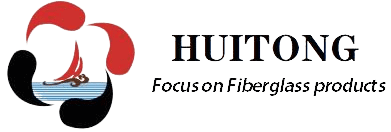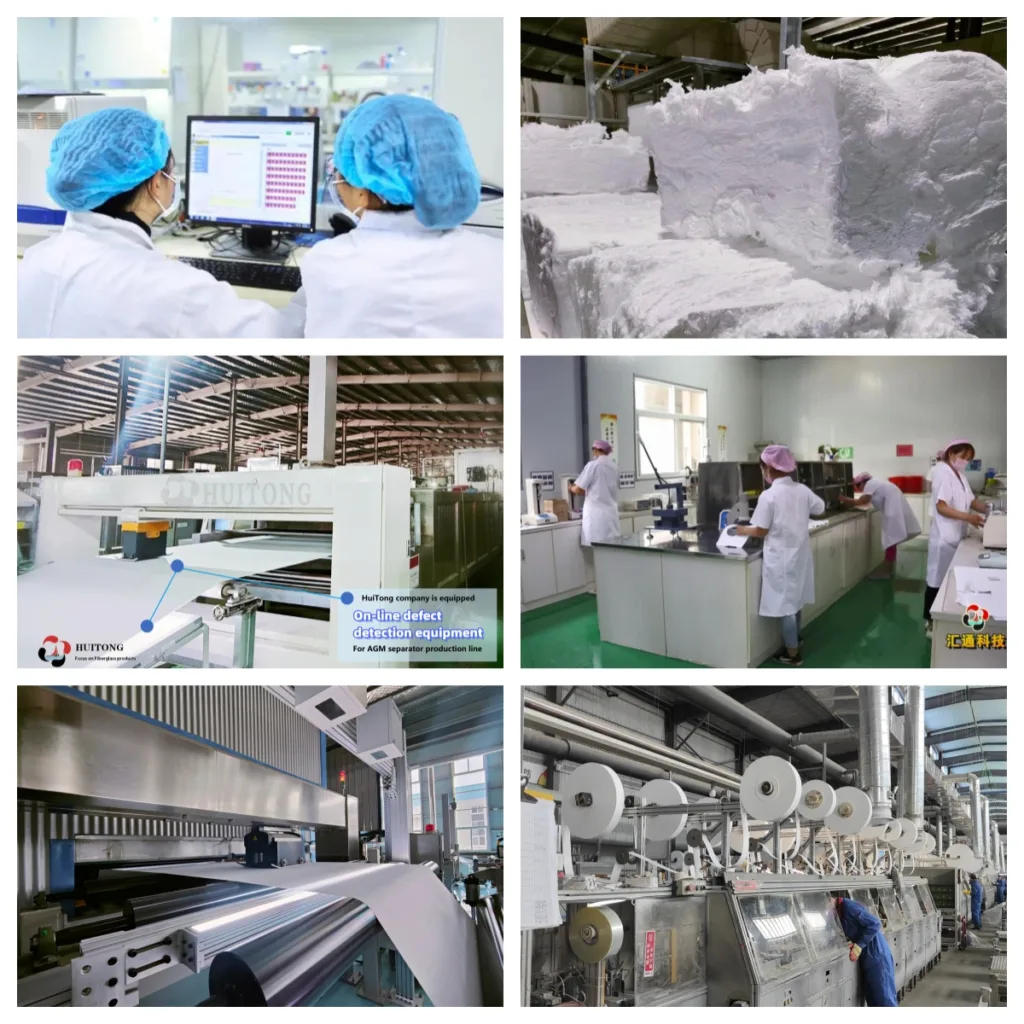Key Parameters OF AGM Separator
When developing new products for our clients, we request their confirmation on the key data of the AGM separator. These data help us better match the clients’ needs, thereby saving time and effort in subsequent sampling and prototyping stages, and effectively reducing the product development cycle. Today, I will introduce to you the testing methods and reasons for testing these critical parameters.
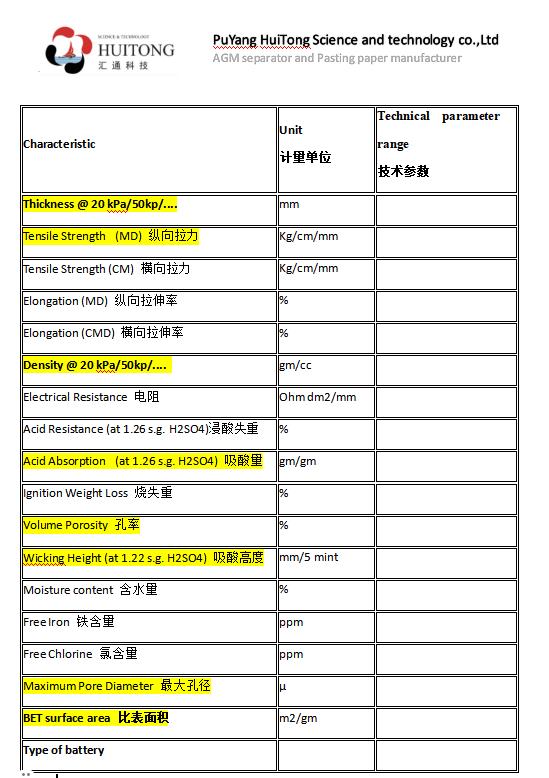
1 Thickness
Thickness is the measurement of a product’s thickness under a specific pressure. Commonly used pressures include 10kPa, 20kPa, 50kPa, and so on.
After the battery Plate are “sandwiched” with AGM separators, they are manually assembled into the battery casing using fixtures or robotic arms. During this process, applying appropriate pressure ensures a tighter compression of the battery pack. Therefore, battery manufacturing companies typically set the pressure based on parameters such as the battery’s intended use. After the production of AGM separators is complete, their thickness is measured using a constant pressure method with ultra-fine fiberglass mats.
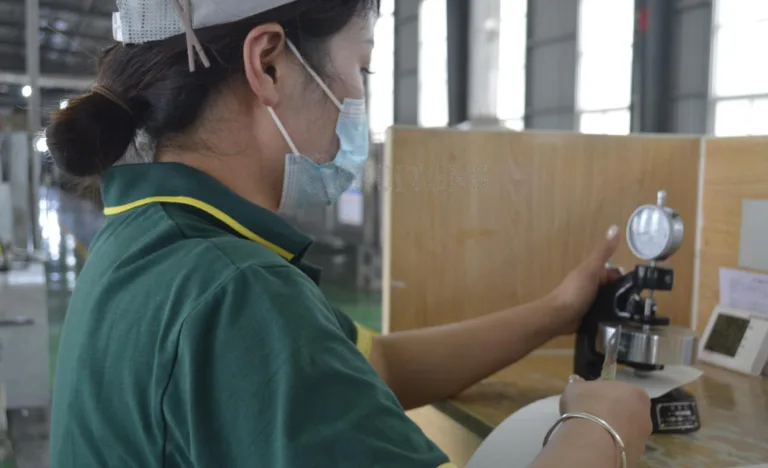
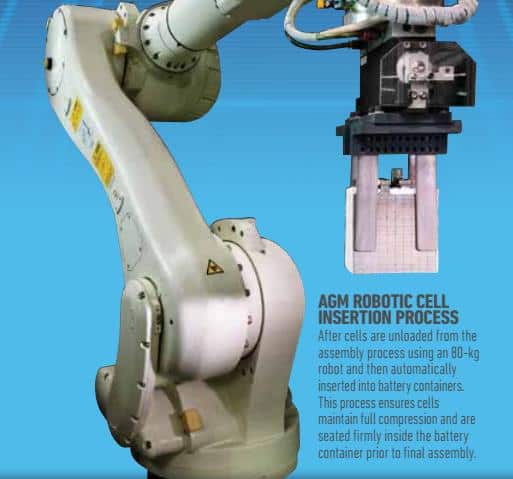
picture note: Some companies already use robotic arms to assemble plate feed cells with constant pressure and high efficiency.
2 Quantitative/Density:
Quantitative, also referred to as basis weight or density, is a crucial indicator of separator quality and represents the compactness of a paper at a certain thickness.
This value is also measured under a certain pressure, commonly used pressures are 10kPa, 20kPa, 50kPa and so on.
For the same thickness but different batches of separators, a higher quantitative value indicates smaller pore size.
Quantitative affects the porosity, pore size, specific surface area, and acid absorption capacity of the separator. The quantitative value of the separator has a significant impact on battery performance. A higher quantitative value results in less shrinkage after acid filling, higher wet-state pressure, and superior battery performance.
High quantitative separators are commonly used in the following types of batteries:
- High-rate discharge cycle lead-acid batteries.
- Long-life standby lead-acid batteries.
- High-power lead-acid batteries.
Low quantitative separators are generally used in the following types of batteries:
- Shorter lifespan standby lead-acid batteries.
- Lead-acid batteries for medium and small-sized power tools.
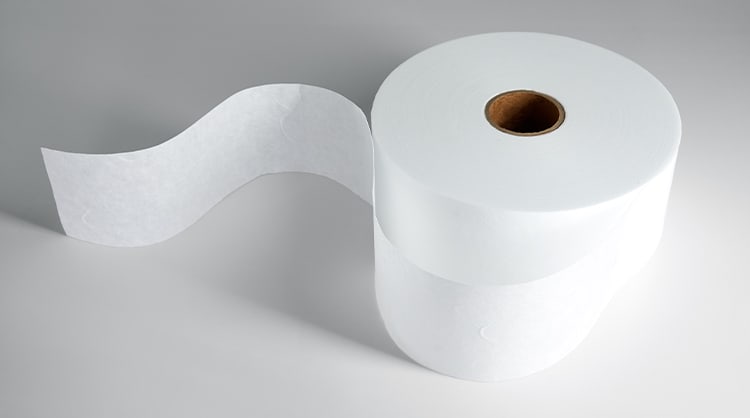
3 Pore Size and Porosity:
Porosity refers to the percentage of void volume occupied by pores in the separator. One of the significant advantages of AGM separators is their high porosity, which directly affects the liquid absorption rate and capacity. AGM separators are manufactured using a wet-forming process with glass microfibers. In the direction perpendicular to the plane of the separator, known as the Z direction, oxygen acts as a pathway. Pores that are too large can cause micro-short circuits, while excessively small pores hinder oxygen diffusion.
The size of the pores and the complexity of the pore structure reflect the separator’s ability to prevent lead dendrite penetration. Larger pore sizes result in poorer dendrite penetration resistance, leading to a relatively shorter battery lifespan, especially for deep-cycle batteries. With deep discharges, the low electrolyte density promotes the dissolution of elemental lead, which then crystallizes and deposits on the negative electrode surface and within the separator pores, continuously growing towards the positive electrode.
The pore structure of the separator significantly impacts battery performance. Insufficient pore volume can result in inadequate acid levels in the battery, affecting low-rate discharge performance. Optimal pore sizes can improve high-rate discharge and low-temperature performance of the battery.

4 Acid Absorption :
AGM separators in batteries utilize capillary action to allow acid to rise upwards, with sulfuric acid climbing to a certain height within a specific timeframe. The ability to absorb a sufficient amount of acid within a short period is beneficial for improving the efficiency of the acid filling process during battery production.
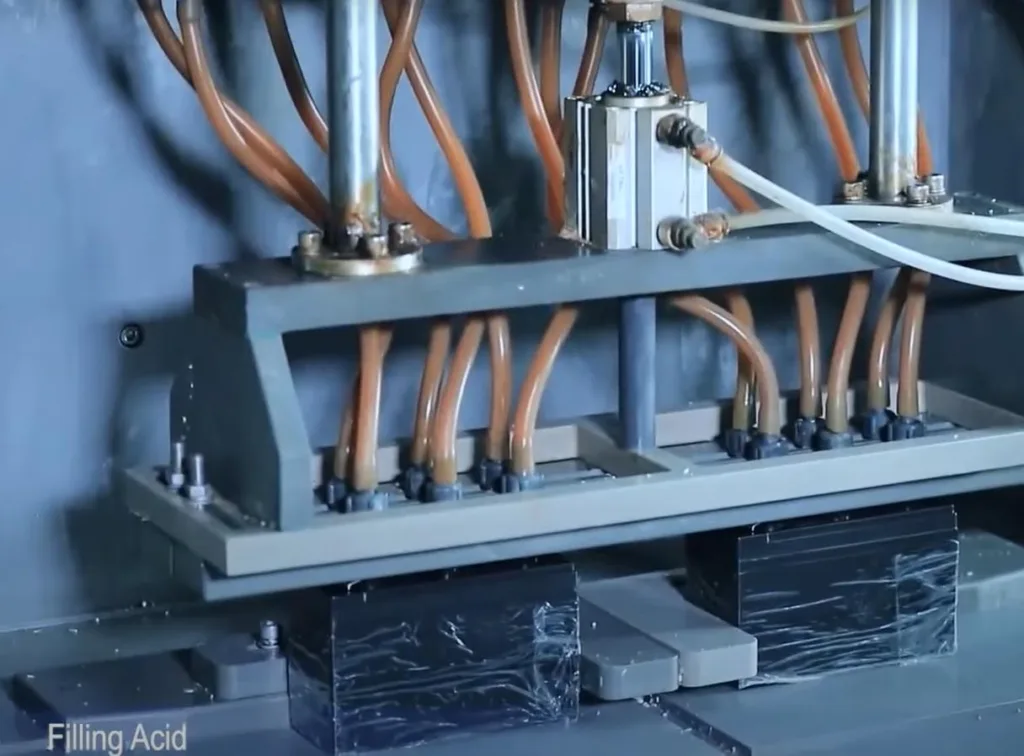
5 Tensile Strength and Elongation:
The tensile strength and elongation of AGM separators are measures of their robustness. Higher tensile strength allows for faster processing speeds during battery assembly. A separator with high strength is less prone to tearing or puncturing, providing a certain level of puncture resistance.
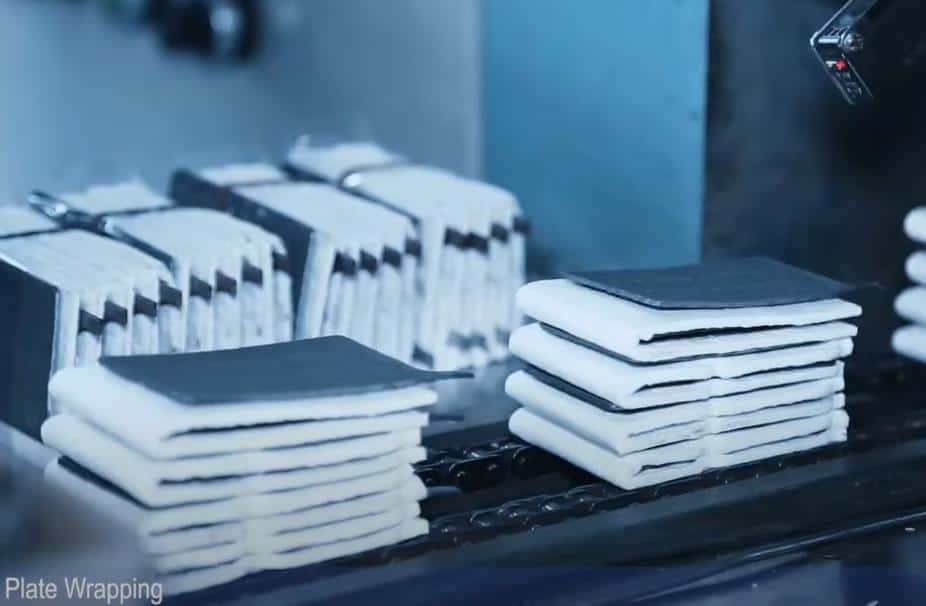
6 Raw material and cost
AGM separators are divided into two main categories: 100% superfine glass fiber material and composite material. In comparison to composite material separators, AGM separators made of 100% superfine glass fiber material have higher production efficiency and less waste, resulting in slightly lower costs. On the other hand, composite fiber AGM separators are made by incorporating organic fibers into the base of superfine glass fiber material, which enhances the strength and puncture resistance of the AGM separator. However, due to the increased material costs and lower production efficiency, the price of composite fiber AGM separators is higher. It is recommended to select the appropriate type based on the specific battery product. What is suitable is considered good, and the decision should not be solely based on price and cost considerations.
The key parameters mentioned earlier are just part of the customized specifications for AGM. There are many other details that have not been explained in depth, but they are sufficient for the initial stage of sample development. For specific details and other questions, you can leave a message or send an email to HT Company.
These key indicators determine the performance of AGM products. If thorough preparation can be done in the early stage of new sample development, it will greatly improve the efficiency of subsequent sample validation.
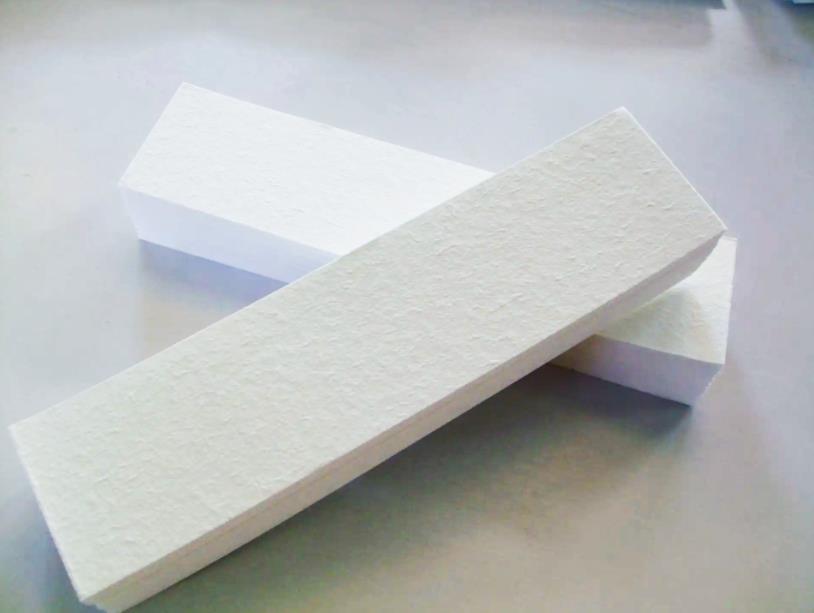
HuiTong Company is the Manufacturer of Absorbent Glass Mat(AGM) separator and Pasting paper for lead-acid battery; the AGM separator supplier for 80% of Chinese batteries manufacturers.
we have 11set AGM separator production line(The production capacity in China is among the top three) and more than 30 years fiberglass products R&d and production experience.Stable quality and competitive price will let you go faster and further
AGM separator is a thin fiberglass mat that is placed between the positive and negative plates of an AGM battery. It is designed to absorb and hold the electrolyte, preventing it from leaking or spilling.
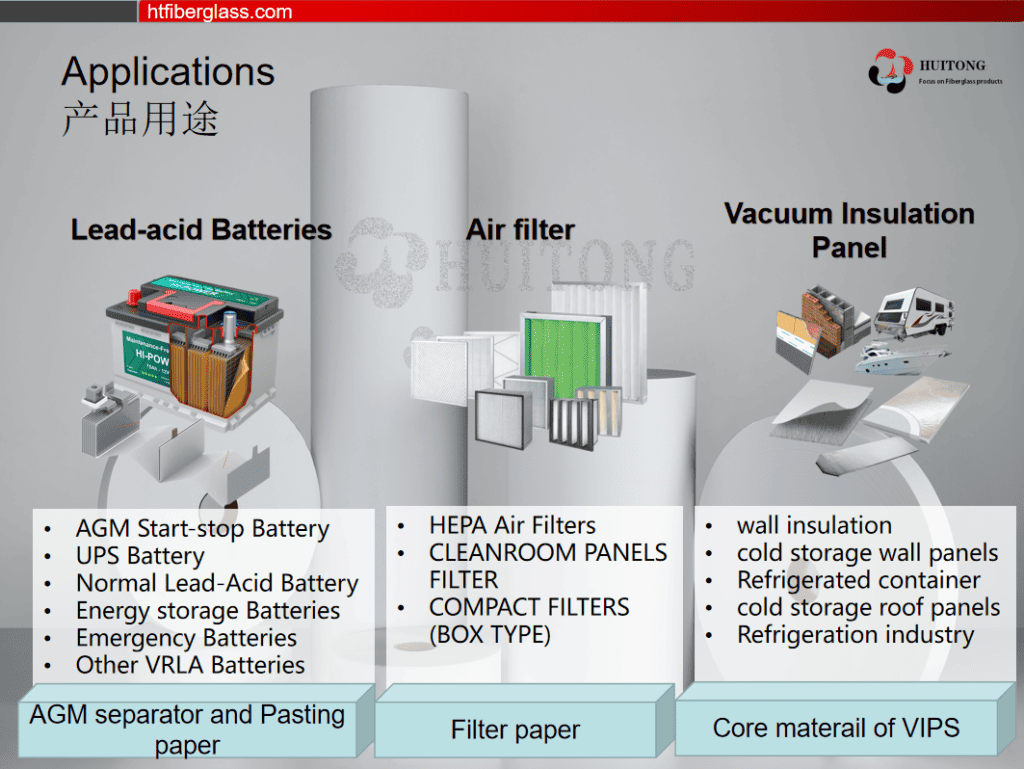

CONTACT WITH US.
Free sample.
Robin Wu
whatsapp: 0086 16639369903
Email : robin.wu@pyhuitong.com
Website :htfiberglass.com
